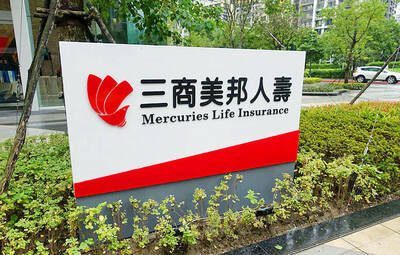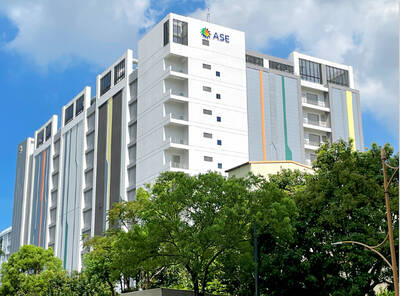After receiving dozens of phone calls and text messages from banks touting cheap, unsecured and easy-to-get consumer loans, Eric Zhang visited one of China’s largest lenders in June and borrowed 400,000 yuan (US$57,530) at an interest rate of 4 percent.
However, there was a catch — he had to sign a letter promising the money would not be invested in property or stocks. That did not stop Zhang. A few days later, he had found a merchant who helped him make a fake purchase and move the cash to his brokerage account.
“I don’t think the bank can track the money and identify its real use,” said Zhang, who works at a private equity firm in Shanghai.
“It’s a great trade for me,” he said, after seeing his fresh stock investments surge 6 percent in one month.
Zhang’s story is playing out across China as retail investors embrace the euphoria of the biggest bull run since 2015. Banks and financing platforms are being swept along as punters look for quick cash to bet on the world’s most volatile equity market. It is a dangerous strategy both for already overextended households as well as lenders, one that is drawing closer scrutiny from regulators.
Authorities are also partly to blame. With the economy reeling from the pandemic, policymakers have pumped out liquidity and eased curbs on shadow banking to backstop small businesses and struggling families.
The easy money has fueled arbitrage with retail investors and corporates tapping the cheaper rates to invest in everything from high-yielding structured deposits to wealth management products and stocks.
Leverage has climbed even as millions of Chinese lost their jobs during the pandemic. Household debt rose to a record 59.7 percent of GDP in the second quarter, doubling from 2012, thanks to a housing boom and the rise of online lenders such as Ant Group (螞蟻集團), which has made it easier for consumers to borrow via its ubiquitous Alipay app.
The build-up of risk has unnerved regulators. In a notice to banks last month, the People’s Bank of China asked lenders to report data on consumer credit extended jointly with Internet platforms to give it a clearer picture of about US$6.6 trillion in outstanding consumer loans. Credit extended by fintech startups, peer-to-peer lenders and many other channels remain unregulated.
“Unlike credit card debt, the use of consumer loans is harder for banks and regulators to monitor,” said Chen Hao, a Shanghai-based analyst with CIB Research. “Once money goes into the stock market, it will bring sizable risks to banks given the current volatility.”
The CSI 300 Index has gained 13 percent this year. Trading has surged, with daily turnover exceeding 1 trillion yuan for 17 consecutive days. Outstanding margin debt on exchanges has risen at the fastest pace since 2015, to more than 1.4 trillion yuan.
Unlike in most major markets, China’s individual investors account for the lion’s share of local stock trading and have been prone to extreme swings in sentiment that can have ripple effects on the economy.
State media fueled the bull run in a bid to show the world that China was emerging from the virus outbreak. Beijing has since tried to cool the fervor by clamping down on illicit margin lending platforms, but the fear of missing out is extreme.

AI BOOST: Although Taiwan’s reliance on Chinese rare earth elements is limited, it could face indirect impacts from supply issues and price volatility, an economist said DBS Bank Ltd (星展銀行) has sharply raised its forecast for Taiwan’s economic growth this year to 5.6 percent, citing stronger-than-expected exports and investment linked to artificial intelligence (AI), as it said that the current momentum could peak soon. The acceleration of the global AI race has fueled a surge in Taiwan’s AI-related capital spending and exports of information and communications technology (ICT) products, which have been key drivers of growth this year. “We have revised our GDP forecast for Taiwan upward to 5.6 percent from 4 percent, an upgrade that mainly reflects stronger-than-expected AI-related exports and investment in the third

Mercuries Life Insurance Co (三商美邦人壽) shares surged to a seven-month high this week after local media reported that E.Sun Financial Holding Co (玉山金控) had outbid CTBC Financial Holding Co (中信金控) in the financially strained insurer’s ongoing sale process. Shares of the mid-sized life insurer climbed 5.8 percent this week to NT$6.72, extending a nearly 18 percent rally over the past month, as investors bet on the likelihood of an impending takeover. The final round of bidding closed on Thursday, marking a critical step in the 32-year-old insurer’s search for a buyer after years of struggling to meet capital adequacy requirements. Local media reports

TECHNOLOGICAL RIVALRY: The artificial intelligence chip competition among multiple players would likely intensify over the next two years, a Quanta official said Quanta Computer Inc (廣達), which makes servers and laptops on a contract basis, yesterday said its shipments of artificial intelligence (AI) servers powered by Nvidia Corp’s GB300 chips have increased steadily since last month, should surpass those of the GB200 models this quarter. The production of GB300 servers has gone much more smoothly than that of the GB200, with shipments projected to increase sharply next month, Quanta executive vice president Mike Yang (楊麒令) said on the sidelines of a technology forum in Taipei. While orders for GB200 servers gradually decrease, the production transition between the two server models has been

ASE Technology Holding Co (日月光投控), the world’s largest integrated circuit (IC) packaging and testing supplier, yesterday announced a strategic collaboration with Analog Devices Inc (ADI), coupled with the signing of a binding memorandum of understanding. Under the agreement, ASE intends to purchase 100 percent shares of Analog Devices Sdn Bhd and acquire its manufacturing facility in Penang, Malaysia, a press release showed. The ADI Penang facility is located in the prime industrial hub of Bayan Lepas, with an area of over 680,000 square feet, it said. In addition, the two sides intend to enter into a long-term supply agreement for ASE to